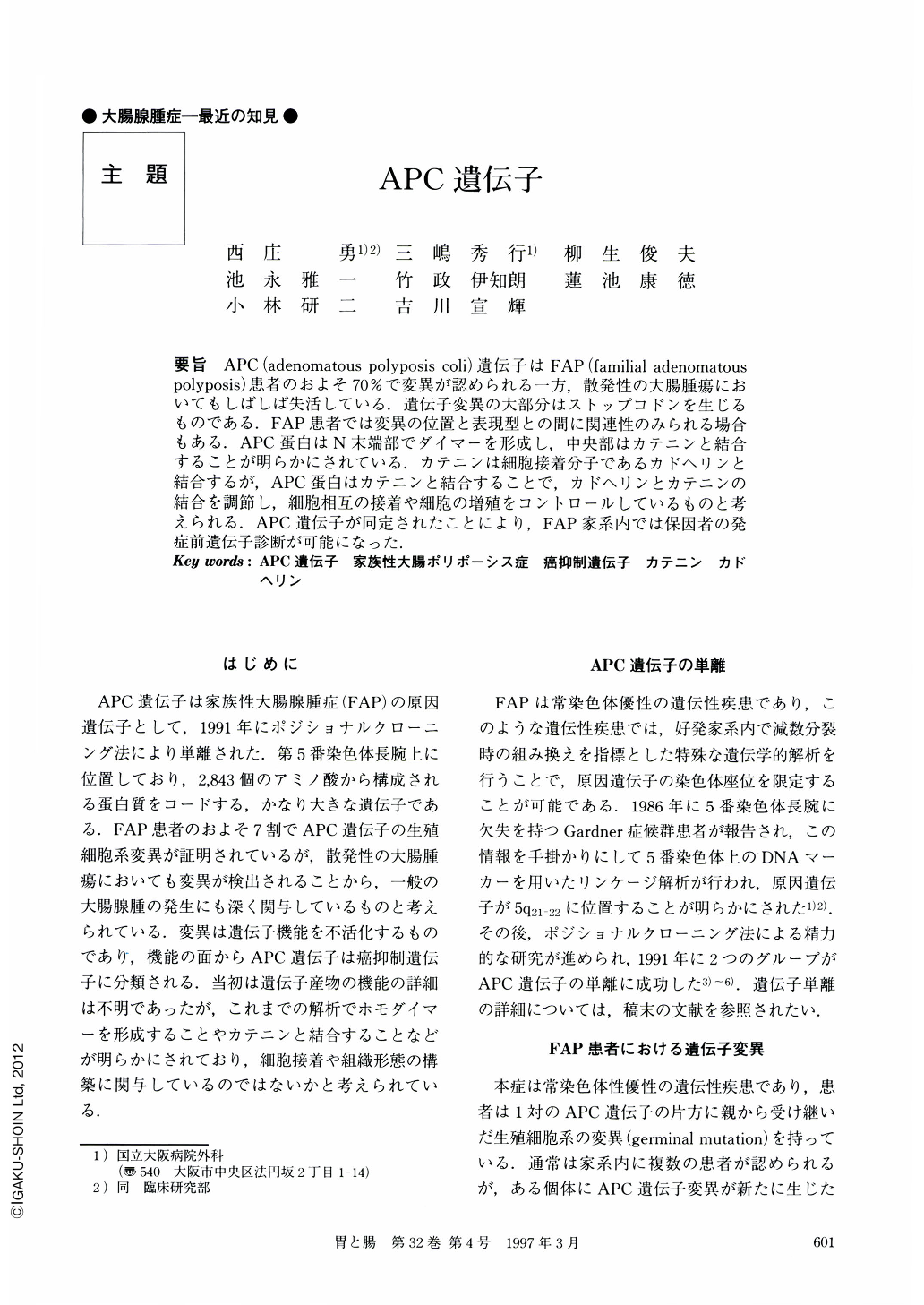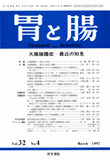Japanese
English
- 有料閲覧
- Abstract 文献概要
- 1ページ目 Look Inside
要旨 APC(adenomatous polyposis coli)遺伝子はFAP(familial adenomatous polyposis)患者のおよそ70%で変異が認められる一方,散発性の大腸腫瘍においてもしばしば失活している.遺伝子変異の大部分はストップコドンを生じるものである.FAP患者では変異の位置と表現型との間に関連性のみられる場合もある.APC蛋白はN末端部でダイマーを形成し,中央部はカテニンと結合することが明らかにされている.カテニンは細胞接着分子であるカドヘリンと結合するが,APC蛋白はカテニンと結合することで,カドヘリンとカテニンの結合を調節し,細胞相互の接着や細胞の増殖をコントロールしているものと考えられる.APC遺伝子が同定されたことにより,FAP家系内では保因者の発症前遺伝子診断が可能になった.
APC (adenomatous polyposis coli) gene was identified as a responsible gene for FAP (familial adenomatous polyposis) in 1991 by positional cloning strategy. Germ-line mutations have been found in approximately 70% of FAP patients. Moreover APC gene is frequently inactivated in sporadic colorectal tumors. Inactivation of APC gene is usually brought about by creation of stop codons through point mutations or frame shift mutations. Locations of some of the germ-line mutations have been reported to correlate with phenotypic manifestations of the patients. The first 55 amino adids of APC protein is proved to form a stable, parallel, helical dimer. In addition, the central portion of APC protein was found to form a complex with β-catenin which associates with the cytoplasmic tail of the cell adhesion molecule E-cadherin, suggesting an important function of APC protein in regulation of cell growth and differentiation. The identification of APC mutations has made presymptomatic diagnosis possible.

Copyright © 1997, Igaku-Shoin Ltd. All rights reserved.


